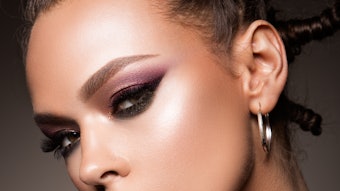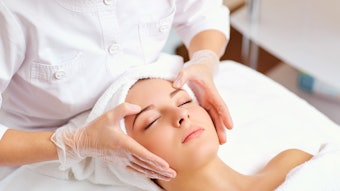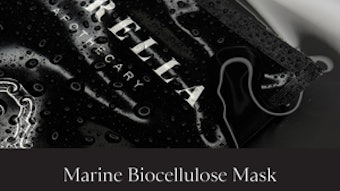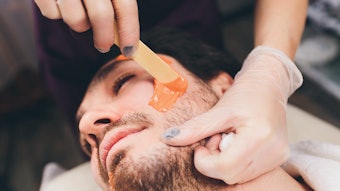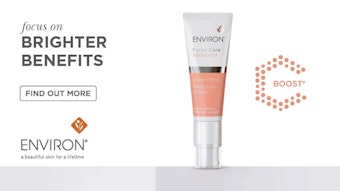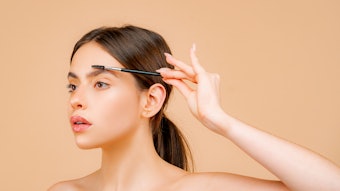
It is just a matter of time before you encounter a client whose skin reacts during a treatment. The question is, will you be armed and ready? Sensitive skin can be a tricky one to treat, more and more individuals are complaining of sensitive skin. Complaints range anywhere from itchy, tight, stinging skin to small, rash like bumps that seem to appear out of nowhere. Until recently, there hasn’t been a lot of concrete research as to why sensitive skin numbers are growing, which is not much comfort to the therapist or the client caught in the middle of a full blown reaction. We now know that sensitized skin is a combination of factors: lifestyle, physiology and environment. It can happen to anyone regardless of skin color and genetic background. So in order to take the sting out of your skin treatments, let’s learn about the root cause.
Knowing the Trigger
Typically, sensitized skin can be attributed to a heightened nerve response and an impaired epidermal barrier. Think of this individual’s skin like an exposed electrical wire that “sparks” every time it’s aggravated. For those that suffer from sensitized skin, there are many triggers that can enhance this response.
Climate. One example is the climate. During winter months, many people describe themselves as more sensitive. The combination of low humidity, wind and indoor heat can be ruthless on our skin.
Products. Product reactions are the second most common factor. Layering alcohols or acids from different skin care lines is a common problem and result in skin sensitivity. People frequently overuse products with the thought that “if a little is good, more must be better.” Some common sensitizers include: fragrances, hydroquinone (for lightening skin), chemical sunscreens and SD alcohol.
Lifestyle. Our lifestyle is one way we can inadvertently sensitize our skin. Long periods of time spent outdoors exposes our skin to more UV damage than average. Alcohol is another trigger; it dilates blood vessels, making a red face look even more red.
Practicioner's Choice. We also must take into consideration that a skin care professional can choose a treatment or ingredient that causes a reaction. A common mistake made by professional skin therapists is choosing an exfoliant that is much too strong for the client’s skin.
Stress. The external factor most strongly associated with sensitive skin is stress. Emotional and physical stress can induce skin itchiness, inhibit wound healing and aggravate inflammation.
Sensitivity Factors
Our skin responds to certain environmental and systemic triggers by launching a series of physiological responses that initiate inflammation. When our skin is injured or irritated, it responds with inflammation.
If we were to see through the eyes of a scientist peering through a microscope at the layers of the skin, we would discover that inflammation is caused by two different factors: an immune response to an allergen or irritant that we’ve come in contact with, or a neurogenic response from an injury directly affecting our skin’s natural barrier. We won’t know which of these responses is at fault because the subsequent inflammation that follows looks the same. Because of this, it’s best that we utilize ingredients, treatments, and home care that will help put a halt to both of these physiological responses.
In addition, the epidermal barrier plays an important role by providing us with a protective shield helping to repel environmental irritants from the surface of our skin while also preventing valuable moisture levels from escaping. If our skin’s barrier becomes compromised by any of the triggers mentioned earlier, it likely will allow outside irritants to enter our skin through tiny, path-like openings exacerbating pre-existing sensitivity. To keep inflammation in check, we must maintain the health of the skin’s barrier and avoid triggers that may launch skin into a full blown sensitized reaction.
Calming Ingredients
The best way to treat sensitive skin is to stop it before it starts by utilizing ingredients that can control inflammation, whether caused by our immune system, nervous system or an impaired barrier. Below are some ingredients effective against sentivie skin.
Avena sativa (Oats). A natural anti-histaminic and anti-irritant, oats are nown to help reduce redness and itch.
Raspberry extract. This anti-inflammatory healing agent strengthens capillary walls.
Sea Buckthorn. This ingredient is rich in rare omega-7 fatty acids, phytosterols and vitamin E. It helps to rejuvenate and restore health to sensitized skin.
Evening Primrose Oil. This skin nutrient is high in gamma linoleic acid and is especially helpful in maintaining a strong barrier.
Green Tea and White Tea. These teas contain polyphenols that are excellent anti-inflammatories and exceptional forms of antioxidants to help neutralize damaging free radicals.
Sodium Hyaluronate. This component of the skin’s natural moisturizing factors holds a thousand times its weight in water to maintain optimum hydration levels.
Professional Treatments
When designing a treatment for sensitive skin, the saying “less is more” certainly applies here. We have to take great care in choosing the right steps for a successful outcome. To achieve this, we must first consult with the client and ask questions that will help lead us to a solution.
Important questions to ask may include:
How long have you been sensitive?
Do you have any allergies to topical ingredients?
Do you blush easily?
When designing the treatment, think simple. This isn’t the time to experiment by mixing multiple products together. Keep a detailed log of everything you use in case you have to reference it later. Omit anything that may potentially irritate and trigger inflammation such as, warm steam, textured sponges or hot steam towels. Instead use a soft cloth, damp cotton pads or a cool towel to aid in the removal of product from the skin. Think calming and soothing at each step of the treatment.
An easy guideline to follow is the Less Rule.
- Less Heat
- Less Friction
- Less Product
- Less time
Equally important as the initial consultation is to analyze your client’s skin directly after cleansing. What is discovered during this step might require you to alter your treatment plan. It is important that when analyzing a client’s skin, to open a dialog with them. Verbally share with them what you are seeing, and offer a solution to help ease their concerns. Touch their skin while verbally identifying problem areas. Often we can feel “hot spots” in the skin that will alert us to inflammation not yet visible. Consider omitting the exfoliation step altogether or provide them with a gentle micro-exfoliation containing ingredients such as rice bran or salicylic acid, which is known for its anti-inflammatory benefits.
Provide a touch therapy that will help reduce stress levels and won’t provoke inflammation. Acupressure, MLD or pressure point are ideal. Finish with products that are designed to provide a barrier to environmental triggers and always protect the skin with a physical sunscreen, such as titanium dioxide. Avoid the use of chemical sunscreens that can heat up the skin.
Handling A Reaction
Most importantly, don’t panic. Most sensitized reactions (80%) are from an impaired barrier rather than an allergic reaction, which takes approximately 24 to 48 hours to manifest. Simply remove the product that is causing the client discomfort and follow with a cool compress or a calming mask. Oatmeal is known for its anti-pruritic and anti-inflammatory effects and is highly recommended to keep on hand for moments such as these. The sting should begin to decrease within 20 minutes of removal. Once the redness has dissipated, apply a calming serum followed by a barrier repairing moisturizer, and finish with a physical sunscreen to protect from damaging UVR.
Home Care and Lifestyle Advice
Home care is equally as important as professional treatments in repairing sensitive skin and providing optimal results. Every skin treatment should include a prescriptive home care plan. We must make sure that the client isn’t sabotaging results accomplished from a professional treatment by using products that compromise a delicate barrier. In addition to product recommendations, provide your client with a list of triggers they should avoid along with useful tips to help alleviate the redness and ultimately build a stronger barrier.


